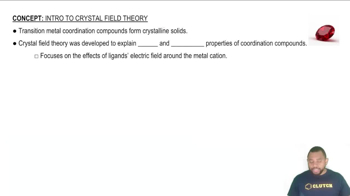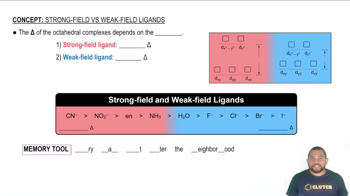Nickel(II) complexes with the formula NiX2L2, where X is Cl- or N-bonded NCS- and L is the monodentate triphenylphosphine ligand P(C6H5)3, can be square planar or tetrahedral.
(b) If NiCl2L2 is paramagnetic and Ni(NCS)2L2 is diamagnetic, which of the two complexes is tetrahedral and which is square planar?




